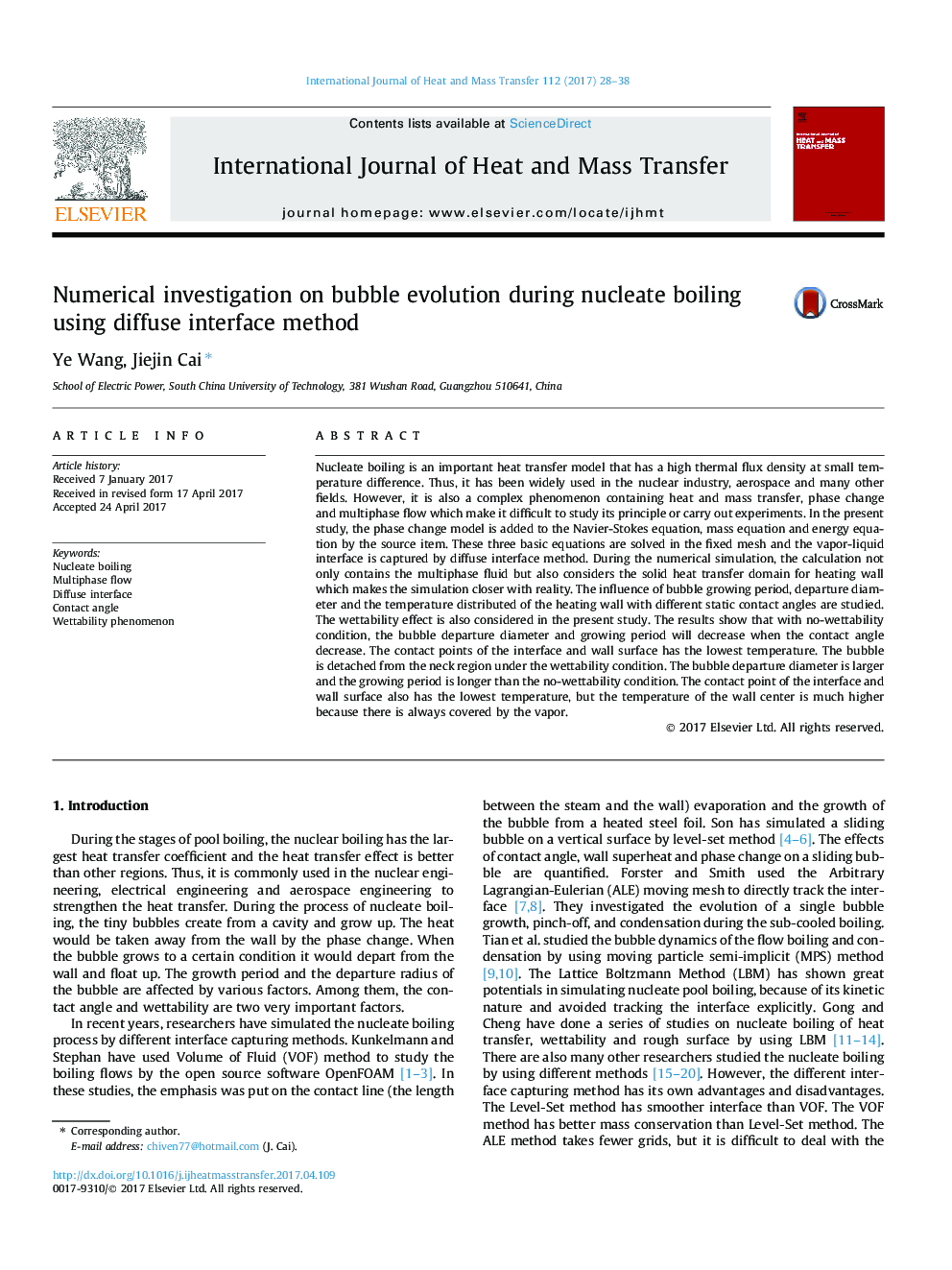| Article ID | Journal | Published Year | Pages | File Type |
|---|---|---|---|---|
| 4993638 | International Journal of Heat and Mass Transfer | 2017 | 11 Pages |
Abstract
Nucleate boiling is an important heat transfer model that has a high thermal flux density at small temperature difference. Thus, it has been widely used in the nuclear industry, aerospace and many other fields. However, it is also a complex phenomenon containing heat and mass transfer, phase change and multiphase flow which make it difficult to study its principle or carry out experiments. In the present study, the phase change model is added to the Navier-Stokes equation, mass equation and energy equation by the source item. These three basic equations are solved in the fixed mesh and the vapor-liquid interface is captured by diffuse interface method. During the numerical simulation, the calculation not only contains the multiphase fluid but also considers the solid heat transfer domain for heating wall which makes the simulation closer with reality. The influence of bubble growing period, departure diameter and the temperature distributed of the heating wall with different static contact angles are studied. The wettability effect is also considered in the present study. The results show that with no-wettability condition, the bubble departure diameter and growing period will decrease when the contact angle decrease. The contact points of the interface and wall surface has the lowest temperature. The bubble is detached from the neck region under the wettability condition. The bubble departure diameter is larger and the growing period is longer than the no-wettability condition. The contact point of the interface and wall surface also has the lowest temperature, but the temperature of the wall center is much higher because there is always covered by the vapor.
Related Topics
Physical Sciences and Engineering
Chemical Engineering
Fluid Flow and Transfer Processes
Authors
Ye Wang, Jiejin Cai,
